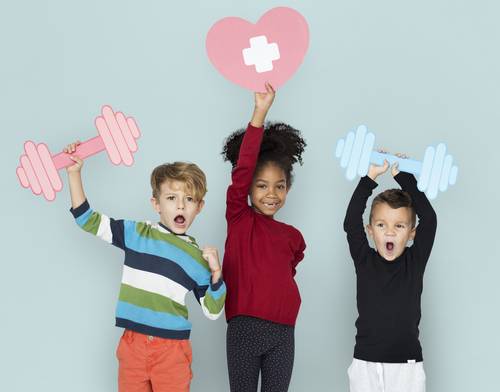Dance Benefits Neurorehabilitation and Social Engagement for CP Patients, Review Finds

Data from several studies has provided groundwork language and refined evidence for the benefits of dance and movement with music (rhythmic auditory stimulation) for neurorehabilitation — a complex medical process that aids recovery from injury or disease to the nervous system — of cerebral palsy.
Specifically, dance and rhythmic auditory stimulation seems to benefit body functions, particularly balance, gait, walking, and cardiorespiratory fitness. for individuals with cerebral palsy.
The review article, “Dance and rehabilitation in cerebral palsy: a systematic search and review,” was published in Developmental Medicine & Child Neurology.
For patients with cerebral palsy, balance, strength, and endurance appear to decline with age, reducing the individual’s overall activity. Correspondingly, activities and opportunities for therapeutic movement and rehabilitation, such as physical therapy, decline over time for children with cerebral palsy.
These limitations have a huge impact on social engagement for patients with cerebral palsy, with many patients becoming increasingly sedentary (inactive) with age. So, there is a great need for identifying neurorehabilitation techniques for cerebral palsy patients to overcome physical and social barriers.
Dance classes and moving to music provide individuals with cerebral palsy opportunities to explore movement in environments that can address both physical and social limitations. Dance and rhythmic auditory stimulation — a technique by which a series of auditory stimuli are presented at a fixed rhythm so that patients synchronize their movements to the rhythms — enables opportunities for engaging in social activities, while providing a therapeutic benefit.
“Discrete postures and gestures used in dance constitute the simplest elements of a movement vocabulary that can be used to compose sequences of meaningful movement,” researchers wrote. “These movement sequences may transfer to everyday functional mobility, thereby providing potential rehabilitative benefit.”
Although there is research pointing to the therapeutic benefit dance may offer for neurorehabilitation in patients with cerebral palsy, the research comes from different therapeutic, health, and education disciplines, each with its own nomenclature, terminologies, and perspectives. This makes it hard for researchers to use all the data together because all of the studies cannot be compared to one another. That creates a need for consistent language to examine dance in the context of neurorehabilitation and other outcomes such as social engagement.
A team of researchers from the University of Illinois at Urbana-Champaign sought to provide a consistent language to consider the mechanisms by which dance and rhythmic auditory stimulation may influence skill acquisition and participation, with participation considered as both process (e.g., engagement, motivational influences) and outcome.
The researchers performed a systematic search and review of existing research literature on dance, rhythmic auditory stimulation, and neurorehabilitation for cerebral palsy, which, after excluding articles by certain criteria, left 11 articles to analyze and review.
There was a lot of variability between the studies, such as whether both dance and rhythmic auditory stimulation were used and whether children and adult patients with cerebral palsy were studied. All of the studies were small as the number of participants ranged from one to 44. Study design types included one case study, 10 clinical trials (of which three were randomized controlled studies and three were pilot studies).
The researchers used two classification systems from the International Classification of Functioning, Disability and Health to unify language on dance, rhythmic auditory stimulation, and cerebral palsy for:
- describing characteristics of the individual, influences of the environment, and interactions with the intervention;
- developing common data elements for clinical research studies in cerebral palsy.
The team found unifying elements between these 11 papers that point toward the benefit of dance and rhythmic auditory stimulation for neurorehabilitation in cerebral palsy. All papers directly measured body functions, including mental functions and neuromusculoskeletal and movement-related functions. The researchers found subcategories within the measured body functions that were significantly affected by dance and rhythmic auditory stimulation, notable subgroups within the following measured body functions:
- Mental functions
- Functions of the cardiovascular, hematological, immunological, and respiratory systems
- Functions of the digestive, metabolic, and endocrine systems
The researchers found that relatively few of the potential body structures and functions categories were addressed in the studies, and even fewer activity and participatory domains covered by the International Classification of Functioning, Disability, and Health were addressed directly.
Additionally, internal and external factors, which modify participation, were not measured. One article stood out among the rest in that it reported a change in attitudes toward performance and disability. This literature suggests that positive attitudes were linked to increased engagement with dancing and rhythmic auditory stimulation and this is likely to have consequences in enabling social engagement for cerebral palsy patients.
“This systematic search and review shows the need to investigate further the effects of dance-based interventions for rehabilitation in cerebral palsy,” researchers wrote. “Most importantly, detailed reporting on study protocols is recommended for effective replication and implementation of the interventions. Regarding research methods, there is a need to bridge the results of rigorous quantitative techniques to clinical outcomes, to facilitate translation of research and adoption of successful interventions,” they added.
This research furthers the idea that, in addition to neurorehabilitation, dance supports social integration for children with cerebral palsy. Future research is required to nail down the positive effects of dance and movement with music to have a positive impact on neurorehabilitation and whether it can, ultimately, affect emotional expression, social participation, and attitudinal change in patients with cerebral palsy.


